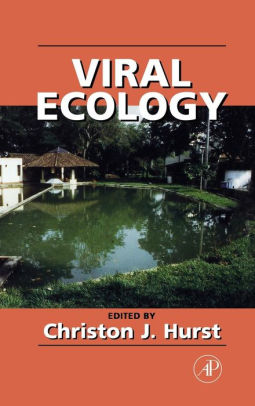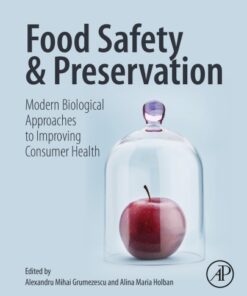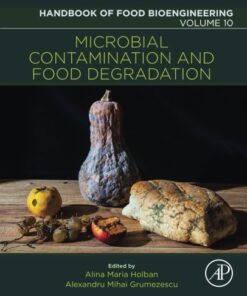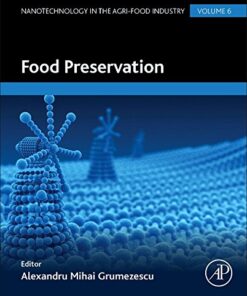(PDF) Viral Ecology by Christon J. Hurst
$22.00
Download instantly Viral Ecology by Christon J. Hurst. It is ebook in PDF format.
ISBN-10: 0123626757 ISBN-13: 9780123626752
Preview
This is the PDF eBook version for Viral Ecology by Christon J. Hurst
Table of Contents
Preface
Section I: Structure and Behavior of Viruses: An Introduction
Chapter 1. Defining the Ecology of Viruses
I. Introduction
II. Surviving the Game: The Virus and Its Host
III. Steppin’ Out and Taking the A Train: Reaching Out and Touching Someone by Vector or Vehicle
IV. Why Things Are the Way They Are
V. Summary (Can There Be Conclusions?)
References
Chapter 2. An Introduction to Viral Taxonomy and the Proposal of Akamara, a Potential Domain for the
I. Introduction
II. The Existing Viral Families
III. The Proposed Domain of Akamara
IV. Conclusions
References
Chapter 3. Virus Morphology, Replication , and Assembly
I. Glossary of Abbreviations and Definitions
II. Introduction
III. Chemical Composition
IV. Morphology
V. Viral Replication Cycle
VI. Assembly and Morphogenesis of Virus Particles
VII. Conclusions
References
Chapter 4. An Introduction to the Evolutionary Ecology of Viruses
I. Introduction: Defining Viral Evolutionary Ecology
II. Fitness and Selection
III. Intrahost Evolution
IV. Interhost Evolution
V. The Adaptive Landscape and Response to Selection
VI. Influence of Other Interactions
VII. Conclusion: Viral Diversity Data and Viral Diversification
References
Section II: Viruses of Other Microorganisms
Chapter 5. Ecology of Bacteriophages in Nature
I. Introduction
II. Distribution
III. Ecosystem Dynamics
IV. Molecular Ecology
V. Non-Indigenous Phage
VI. Summary
References
Chapter 6. Ecological , Evolutionary , and Geochemical Consequences of Viral Infection of Cyanobacte
I. Introduction
II. Taxonomy, Morphology, and Evolution of Algal Viruses
III. Ecological Implications of Viral Replication
IV. Diversity
V. Distribution, Abundance, and Population Dynamics of Natural Algal Virus Communities
VI. The Fate of Viruses in the Environment
VII. The Effect of Viruses on the Mortality of Algal Populations
VIII. The Role of Algal Viruses in Global Geochemical Cycles
IX. Summary
References
Chapter 7. Viruses of Fungi and Protozoans : Is Everyone Sick?
I. Introduction
II. Relationships among dsRNA Viruses of Lower Eukaryotes
III. Satellite Viruses: Killer Toxins
IV. Other Viral Symbionts in Fungi
References
Section III: Viruses of Macroscopic Plants
Chapter 8. Ecology of Plant Viruses, with Special Reference to Whitefly-Transmitted Geminiviruses (W
I. Introduction
II. Virus–Vector–Plant Ecosystems: Ecology of WTGs
III. Control of Geminivirus Diseases
IV. Role of Man in Virus Ecology
V. Emergence of New Recombinant Viruses
VI. Conclusions
References
Chapter 9. Viroid Diseases of Plants
I. Introduction
II. Viroid Structure
III. Viroid Taxonomy
IV. Principal and Alternate Hosts
V. Transmission Strategies
VI. Survival Strategies
VII. Replication Strategies
VIII. Effects of Viroid Infection on the Host
References
Section IV: Viruses of Macroscopic Animals
Chapter 10. Ecology of Insect Viruses
I. Introduction
II. Types of Viruses
III. Transmission
IV. Viruses and the Host Individual
V. Viruses and the Host Population
VI. Synthesis: Evolution of Pathogen–Host Associations
References
Chapter 11. Ecology of Viruses of Cold–Blooded Vertebrates
I. Introduction
II. Immune Response of Cold–Blooded Vertebrates to Virus Infections
III. Effect of Extrinsic and Intrinsic Factors on Disease Development and Virus Replication
IV. Ecology of Selected Virus-Host Systems
V. Overall Summary
References
Chapter 12. Virus Cycles in Aquatic Mammals, Poikilotherms, and Invertebrates
I. Introduction
II. Calicivirus Cycles in Pinnipeds
III. Ocean Cycles in Cetaceans
IV. Poikilotherm and Avian Hosts
V. Invertebrate Calicivirus Hosts
VI. Terrestrial Hosts of Marine Caliciviruses
VII. Zoonotic Expression of Caliciviruses of Ocean Origin
VIII. Conclusions
References
Chapter 13. Macroecology and Microecology of Viruses of Terrestrial Mammals
I. Introduction
II. Taxonomy of Viruses of Terrestrial Vertebrates
III. Relation of Taxonomic Placement and Viral Ecology
IV. Effects of Viruses on Vertebrate and Arthropod Populations
V. Conclusions
References
Chapter 14. Relationship Between Humans and Their Viruses
I. Introduction
II. Achieving the Goal of Viral Reproduction
III. Achieving the Goal of Viral Transmission between Hosts
IV. Summary of Viral Families That Afflict Humans
V. Conclusions
References
Chapter 15. Impact of Avian Viruses
I. The Avian Host
II. Replication and Persistence of Viruses in the Avian Host
III. The Major Groups of Viruses That Infect Birds
IV. Impact of Viral Transmission among Members of the Class Aves
V. Impact of Transmission of Avian Viruses outside the Class Aves
VI. Conclusions and Future Considerations
References
Chapter 16. Prion Diseases of Humans and Animals
I. Introduction
II. The Prion Diseases
III. Characterizing the Infectious Agent
IV. The Role of PrPC in the Disease Process
V. The Normal Role of PrPC
VI. Species Barriers and Protein X
VII. Prion Strains
VIII. Peripheral Pathogenesis
IX. Conclusions and Future Prospects
References
Index
Color Plate Section




